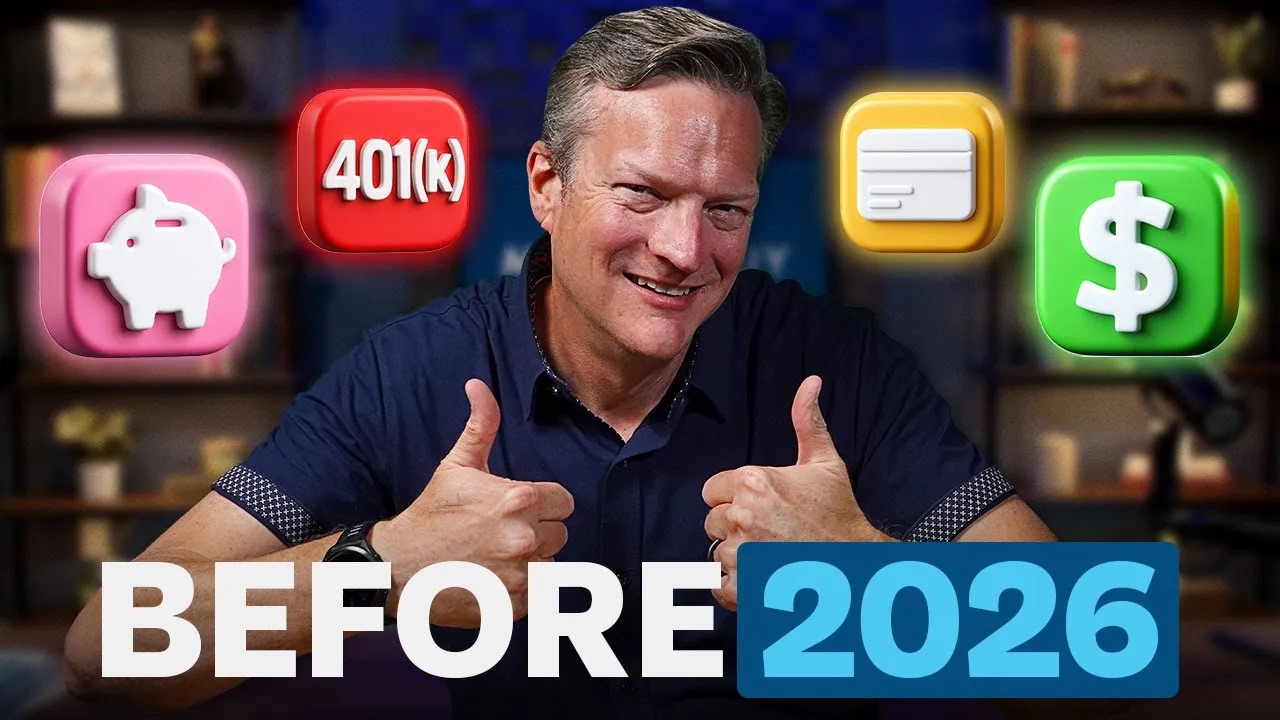I have a question for you guys. My 401k offers three contribution options: pre-tax, Roth, and voluntary after-tax. In what situation would I choose voluntary after-tax, and what’s the benefit over traditional savings?
Giselle, I love this when you set us up for this, and so many people think that when it comes time to save in a 401k, you have two options: pre-tax or Roth. We talk about those ad nauseam all the time, always discussing those. However, there’s actually a third option that people don’t realize, and that is the after-tax—the apex predator of 401k contributions.
Here’s what’s beautiful about the after-tax: the pre-tax and Roth are capped. You can only do $22,500 if you’re under 50, and it goes up to $30,000 if you’re over 50. However, the after-tax portion is not capped at the $22.5. If your employer makes that available, you can actually put dollars in that all the way up to the section 415 limits, which I think this year are $66,000. That’s right, you could put $66,000 into your 401k if you so chose by doing the after-tax. You do the first $22.5 as pre-tax or Roth, and the remainder is after-tax. The dollars go in exactly like they sound, like they go in after tax. They get invested, they grow tax-deferred, and then when you go to pull those dollars out later in retirement, you pull out your contributions tax-free because you already pay tax on them. But the earnings are taxable ordinary income, just like all of your other income.
I didn’t hear my apex predator moment, and I guess I did it too early. Did I do it too early? That’s the way that after-tax normally works. That’s the way that it works if you’re not a financial mutant. If you’re a financial mutant, no—you’ll recognize that the after-tax provides an amazing opportunity to do what we call the mega backdoor—for you apex predator.
Yeah, so this is now, look, this is the opportunity where you actually get the conversion opportunity to turn those after-tax contributions actually into Roth dollars, all the way up to the 415 limits, right, those big numbers. Now, there is a catch. I want to calm everybody down. Realize you can’t squeeze out your employer’s free money because this is a lot of times when I see these in action, it means, first of all, compliments to your HR department, and somebody is really nerdy, likely they listen to the Money Guy show, and their financial mutants themselves because this means they actively went out there to design a plan that actually has this after-tax option. So kudos.
You have low-cost index funds, funds other great things because somebody did their homework and packed a lunch on this thing. So that’s great, but don’t squeeze out your employer money. So if you work for an employer who actively has, you know, whether you’re talking about profit-sharing, matching money, that all fits into those 415 limits. So if you go out there and you get way too excited and you go take advantage of all $66,000 of this for yourself, but you squeeze out the $10,000 to $15,000 that your employer was going to put in, you just get to keep the money and you don’t get the benefits. So that’s why you always have to—it’s kind of like when you go get a cup of coffee, like, you know, I was in church when I went and ordered, whether I wanted a light roast, medium roast, they asked, “Do you want room for cream?” I was like, “Yeah, I want room for cream.” That’s kind of what you have to do when you’re doing these Roth conversions with the apex predator of the mega backdoor. You have to leave room for your employer money so that you don’t squeeze it out. And so generally speaking, people ask, “Okay, well, when does that make sense? When do I start taking advantage of that?” It’s after step six, it’s after you’ve maxed out your employer options because at the very beginning, you want to do the $22.5 in either the pre-tax or the Roth, and then as you get into hyper accumulation, you’re deciding, “Do I want to hyper accumulate in an after-tax brokerage account, or do I want to do the mega backdoor Roth?” So it is a between six and seven type step for most individuals. Giselle, it’s awesome. Send a link of this video to all of your co-workers because you should all know about it because it’s stinking incredible.













